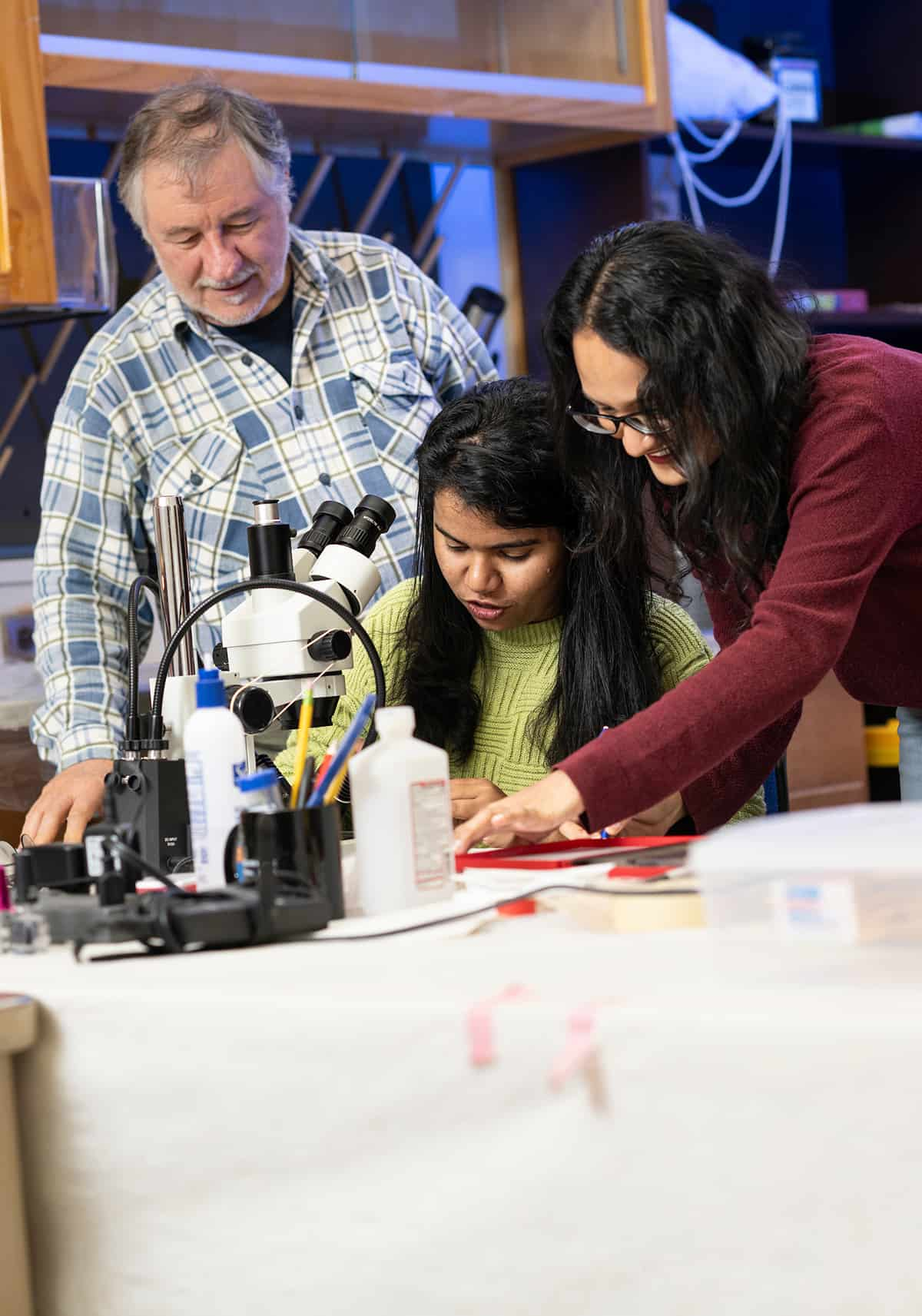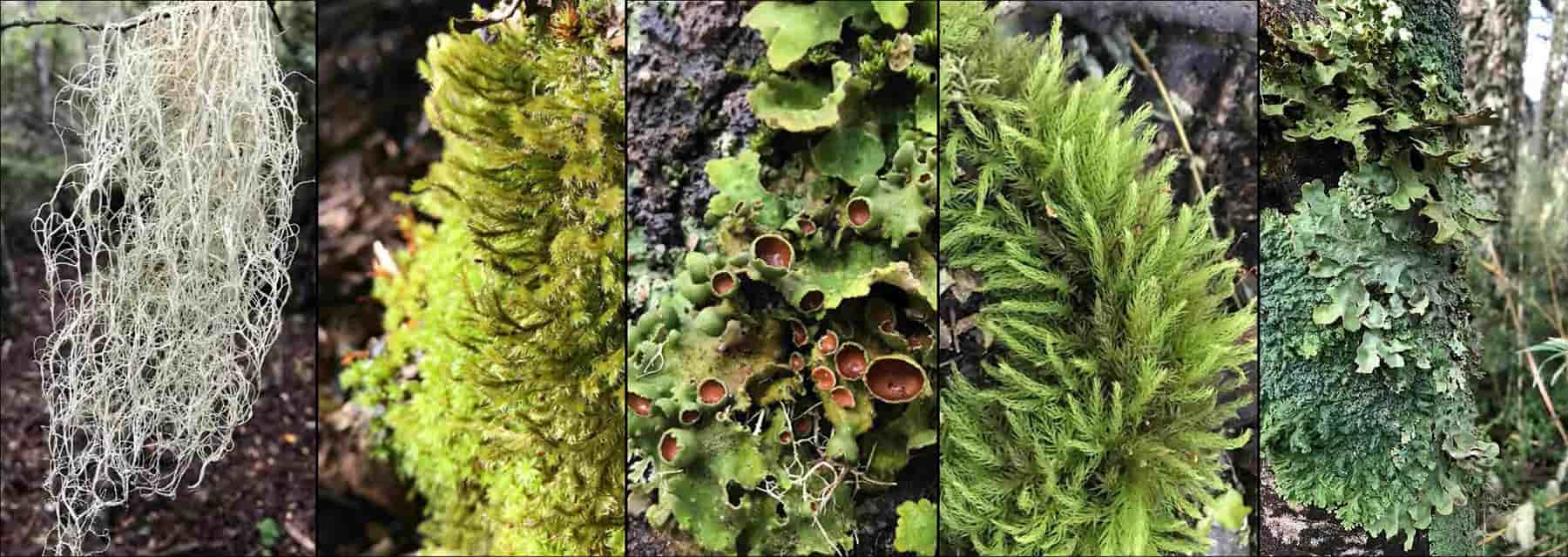A discovery made by a faculty researcher at the University of North Texas is shedding new light on biodiversity at the southernmost tip of South America.
A discovery made by a faculty researcher at the University of North Texas is shedding new light on biodiversity at the southernmost tip of South America.
Jaime Jiménez, professor of wildlife ecology in the Department of Biological Sciences, identified both previously documented and new species of tardigrades — also known
as “water bears” — during research trips to the rainforests of southern Chile. He
is now cataloguing and studying the specimens with a team of graduate students, supported
by colleagues from the University of Plymouth and the British Antarctic Survey, to
help fill gaps in scientific knowledge. In their initial screening, the team found
around 80 different species. About 1,500 have been described worldwide.
“There are so many different and diverse species of these creatures,” said Jiménez,
who serves as the principal investigator for the project. “Studying them opens a window
of opportunities to analyzing phenomena across many different biological systems and
to tackle novel research questions. By being at the base of the food webs, tardigrades
play critical ecological roles in the environment. They are carnivores, like small
lions, and herbivores, like tiny gazelles.”
Like many scientific discoveries, this one happened by chance. Jiménez was on Navarino
Island, a remote location in the far south of the South American continent, conducting
research as part of a three-year National Science Foundation grant. The project focused
on giving students international research experience. While studying how mosses and
similar plants are spread through the ecosystem, he and two students began analyzing
bird droppings under a microscope — and noticed small, worm-like moving organisms.
Drs. Peter Convey and Sandra McInnes, Jiménez’s colleagues and scientists with the
British Antarctic Survey, later identified them as tardigrades. Their findings indicated
that they might be dispersed by birds.
“I thought, ‘Why don’t we start looking at them more closely?’ They’re very interesting
— they’re extremely hardy, adaptable, diverse and still largely a mystery to science,”
Jiménez said.
Tardigrades are microscopic animals that have existed for 400 to 500 million years
— long before dinosaurs or humans. Despite their tiny size of less than a millimeter
in length, they’re incredibly resilient. These creatures are found almost everywhere
on Earth, including the harshest environments like Antarctica, in deep oceans and
on the highest mountains. Their secret is a survival trick called cryptobiosis — a
state in which they completely shut down their biological processes, essentially pressing
pause on life. In this state, they can survive extreme conditions: freezing temperatures,
intense radiation, crushing pressure and dehydration. Though they usually live just
a few months, they can remain in cryptobiosis for decades and “wake up” quickly once
conditions improve.

Because of their extreme survival abilities, tardigrades have attracted interest from
scientists in fields ranging from space research and astrobiology to medicine. The
U.S. Department of Defense has funded studies to learn more about their unique adaptations.
According to Jiménez, tardigrades can also serve as environmental indicators — meaning
that changes in their numbers can signal changes in the health of their ecosystem.
“I’m using tardigrades as a model group to study ecological and biodiversity questions,”
Jiménez said. “Things like their diversity, how they interact with other species and
what factors influence their abundance.”
To collect tardigrades, Jiménez and his team gather small one-inch-square patches
of moss and lichens — the natural homes of tardigrades — from Chile’s southern rainforests.
Once the moss samples are dried and sealed in envelopes, they trigger the tardigrades
to enter cryptobiosis. This allows them to be transported safely to the U.S. for study.
In the lab, the samples are rehydrated, prompting the tardigrades to “wake up” and
start moving again after a few hours. Researchers then examine them under microscopes,
along with other tiny organisms such as nematodes, rotifers and ciliates that share
their environment. The team examines which species are present, their locations, numbers
and how they interact with the environment.
Arya Mohanan, a first-year doctoral student majoring in environmental science, joined
Jiménez’s team during her master’s program and spent two years contributing to research.
Her role in the project was to study how tardigrade species varied within individual
moss or lichen samples and across the broader southern Chilean landscape where those
samples were collected.
“We analyzed the samples Dr. Jiménez prepared using a dissecting microscope, along
with the images from a transmission microscope,” Mohanan said. “Once we started identifying
the different species, I could begin tracking how their diversity shifted between
locations — from tiny moss patches to the wider region.”
Using a specialized microscope called a differential interference contrast microscope,
which creates a 3D-like image, the team photographs each tardigrade in detail. So
far, Jiménez and his students have shared their findings through seven poster presentations,
three scientific papers and several journal articles. They also presented at the International
Symposium on Tardigrada in Copenhagen.
Jiménez continues to study the tiny animals in southern Chile, examining the different
variables affecting their population sizes and distributions. Those discoveries could
provide researchers the tools to better understand tardigrades’ survival skills and
reveal a hidden, often overlooked biodiversity.

“We still don’t fully understand how tardigrades survive in such harsh and changing
conditions. Our research doesn’t answer that directly, but it adds an ecological perspective
on the drivers of their diversity,” said Ishani Mahawaththa, another first-year doctoral
student in biology who also worked on Jiménez’s team as a master’s student. “By looking
at how many tardigrades exist in different environments, we can start narrowing down
the conditions that influence their survival and success.”
For Mahawaththa, one moment during her work on the project stands out: the first time
she came face-to-face with a living water bear. Few researchers have seen them alive.
“Dr. Jiménez told us that some tardigrades have star-shaped patterns on their outer
layer,” Mahawaththa said. “The first day I went to the lab to take pictures, I focused
the microscope and actually saw them — tiny stars scattered across their bodies, just
like the night sky. It was amazing, and I will always remember that moment. I loved
seeing those stars.”
Via UNT News